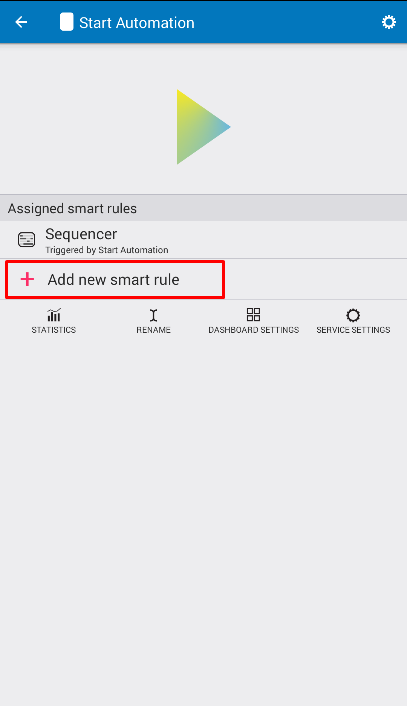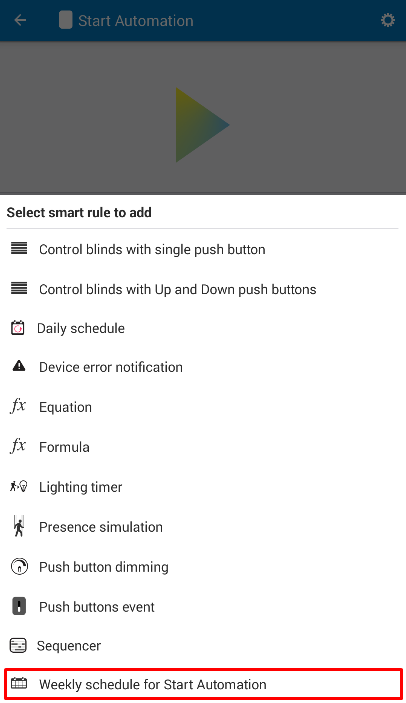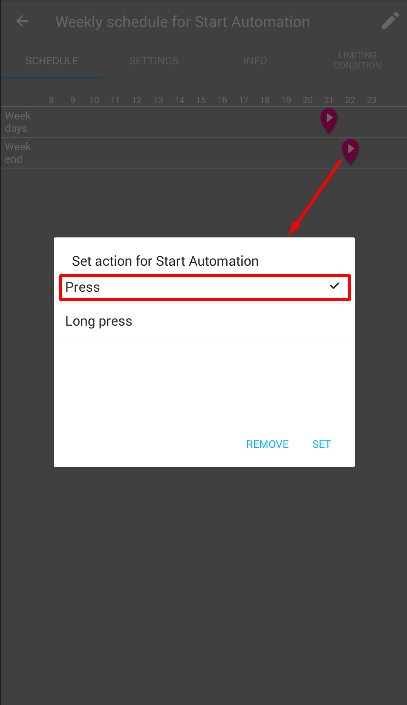- • Requirements for the controlled devices
- • Dashboards, Zones, Categories
- • Simple thermostat with hysteresis
- • Simple Heating management using Weekly schedule and Presence switch
- • Power limiting
- • Notification on high temperature (DEPRECATED)
- • Configuring hysteresis control via Equation Smart Rule
- • PID Temperature regulation
- • PID Cascade
- • Regulation of Boiler Cascade
- • Equithermic regulation
- • Heating control in high electricity tariff via load management tariff indicator input
- • Heating and Cooling modes
- • Editing multiple devices at once
- • Setting the response speed of push buttons
- • Integrate multiple control units Core
- • Safe values
- • How to combine two daily schedules in one day
- • Linking devices together
- • Device log
- • Using statistic values in Smart Rules
- • Hot water circulation pump control
- • Exporting data from TapHome into Google Spreadsheet using Integromat
- • Exporting device descriptions
- • 2025
- • 2024
- • 2023
- • 2022.2
- • 2022.1
- • 2021.3
- • 2021.2
- • 2021.1
- • 2020.1
- • 2019.1
- • 2018.1
- • 2017.1 - Blinds automation - angle control update
- • 2017.1 - Blinds automation - Depth of sun rays
- • 2017.1 - Charts updated
- • 2017.1 - Core update from the app
- • 2017.1 - Double click and triple click
- • 2017.1 - Expose devices
- • 2017.1 - Multi-value switch
- • 2017.1 - Permissions
- • 2017.1 - Replace module action
- • 2017.1 - Set to Automatic mode - "Push buttons event" Smart Rule
- • 2017.1 – Daily schedule Smart Rule
- Documentation
- Configuration
- Irrigation
Irrigation
The example below explains step by step how to configure simple automatic irrigation system for 3 zones using sequencer and weekly schedule.
Configuration of DO12 module to enable switch outputs for 3 zones. These outputs will control the respective valves.
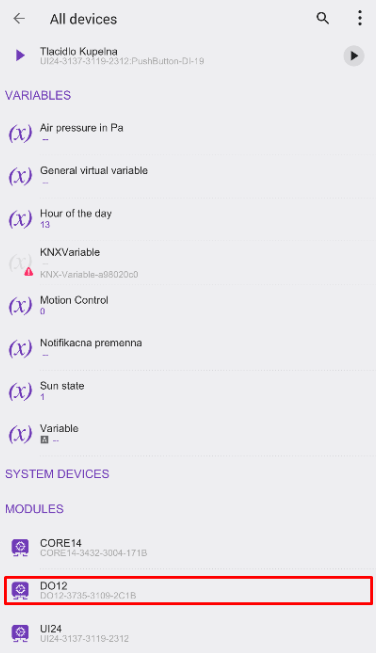
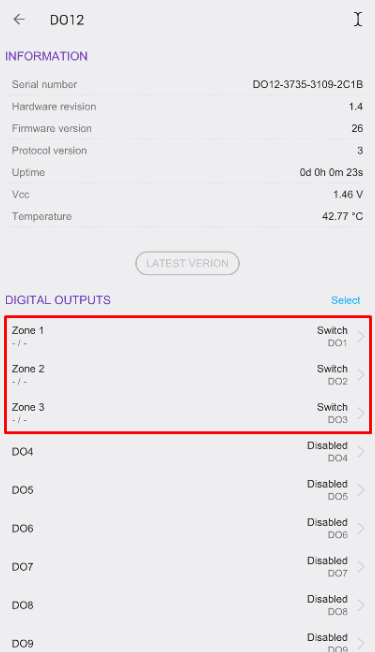
Configuration of virtual Multi value switch called "Irrigation control" which defines 4 states of all available scenarios:
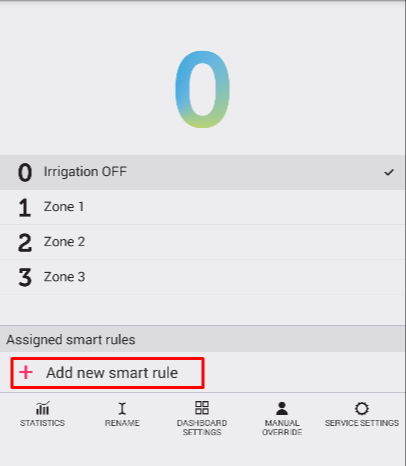 | 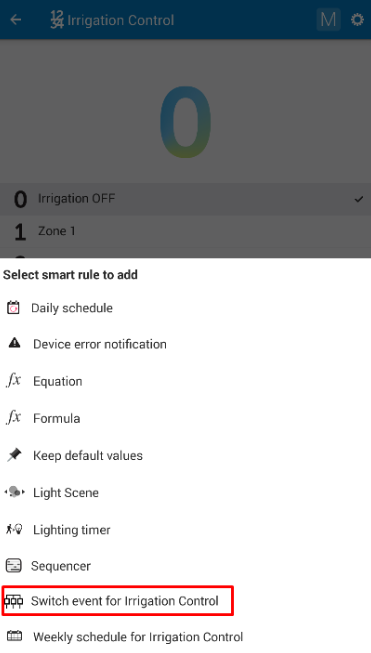 | 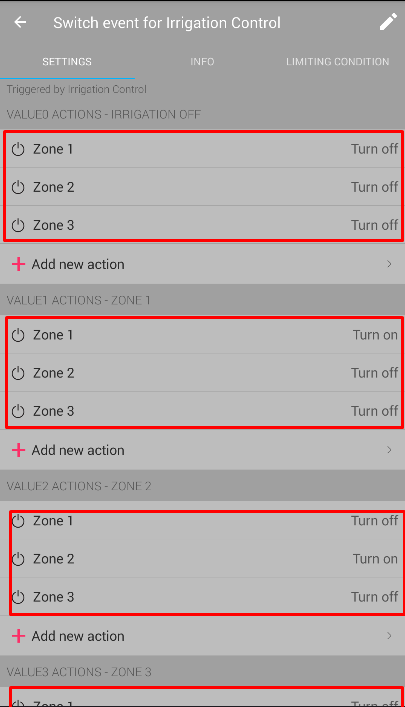 |
Adding Smart Rule "Keep default values" with "0 Irrigation OFF" state as default state for "Irrigation Control" to make sure that no zones become active by itself.
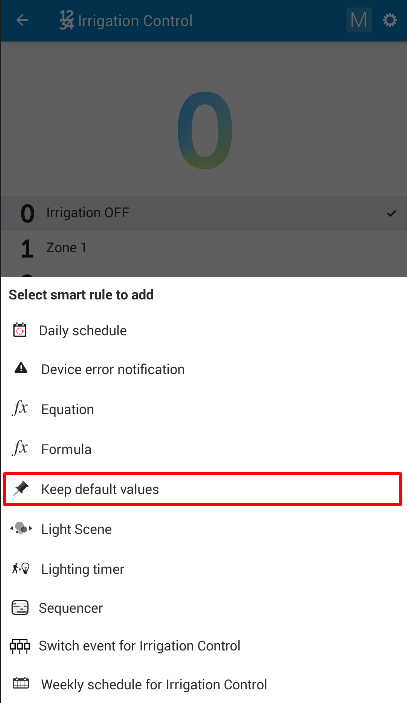 | 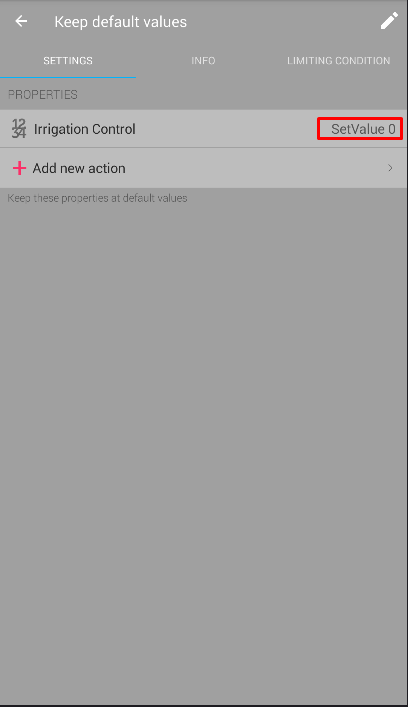 |
Next step is creating and configuring Sequencer to manage sequences - cycles with order and duration of irrigation for each zone.Adding virtual Push button Called "Start Automation". This Push button is necessary to start Sequencer Smart Rule created in the next step as the Sequencer is not able to start by itself.
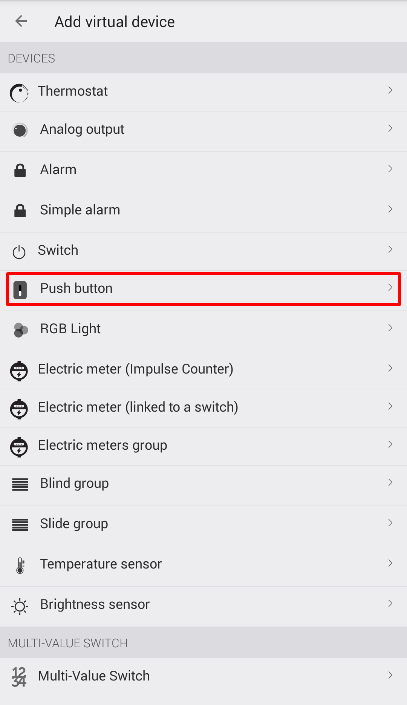 | 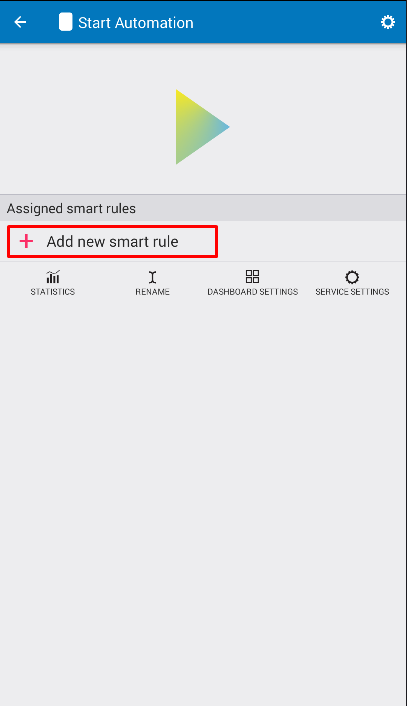 |
Making Sequencer Smart Rule called "Sequencer" within "Irrigation Control" multivalue switch as the sequencer will control order and duration of "Irrigation Control" states.
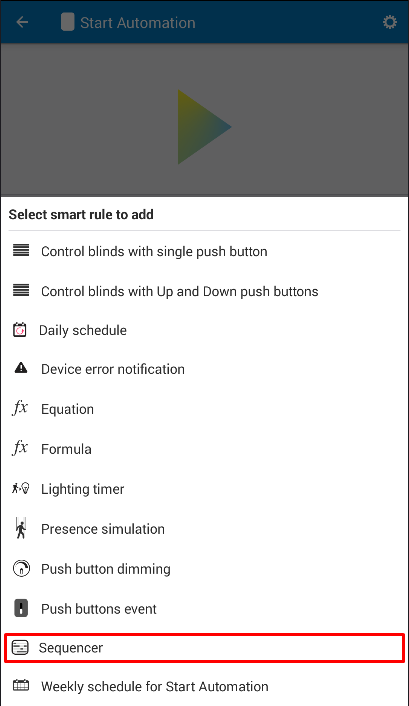 | 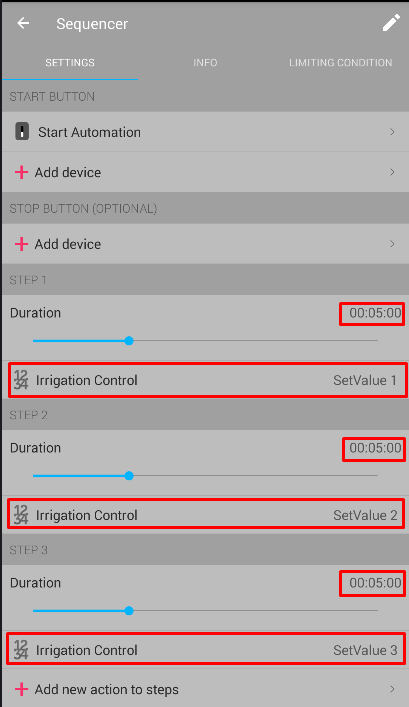 | 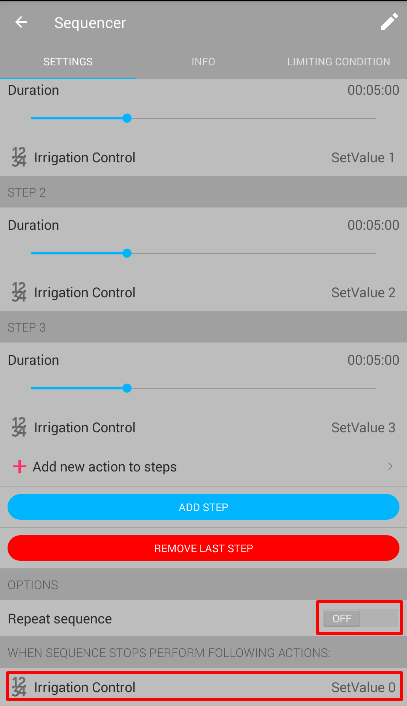 |
Adding "Weekly Schedule" Smart Rule within push button "Start Automation" to control when (what day and hour) the "Sequencer" will start.
